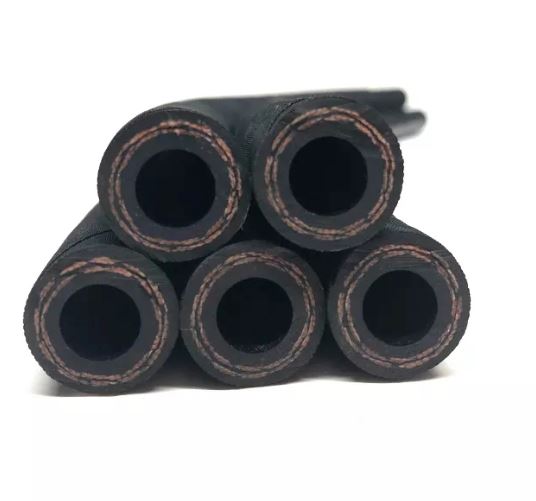polyurethane hose vs rubber
Polyurethane Hose vs. Rubber Hose A Comprehensive Comparison
When it comes to hoses used in various applications, two of the most prominent materials that come to mind are polyurethane and rubber. Both polyurethane hoses and rubber hoses have their own set of characteristics, advantages, and disadvantages. Choosing the right type of hose depends on the specific needs of the application, including flexibility, durability, resistance to various environmental conditions, and cost. This article aims to provide a detailed comparison between polyurethane and rubber hoses to help you make an informed decision.
Material Composition
Polyurethane Hose Polyurethane is a versatile polymer that has gained popularity in various applications due to its unique properties. It is known for its excellent elasticity and durability. Polyurethane hoses are produced through the reaction of polyols and diisocyanates, resulting in a material that can be tailored to meet specific requirements, including flexibility and tensile strength.
Rubber Hose Rubber hoses are typically made from natural rubber or synthetic rubber compounds, such as neoprene or EPDM. These materials offer good flexibility and abrasion resistance. Rubber has been a long-standing choice for hoses due to its reliable performance, especially in applications requiring high levels of flexibility and resilience.
Flexibility and Bend Radius
One of the most significant factors to consider when choosing a hose is its flexibility. Polyurethane hoses are generally more flexible than rubber hoses. This flexibility allows polyurethane hoses to be bent and twisted without kinking, making them ideal for applications where movement and routing are critical. On the other hand, rubber hoses, while also flexible, often have a larger minimum bend radius, making them less suitable for tight spaces or intricate arrangements.
Durability and Wear Resistance
Durability is another essential aspect of hose selection. Polyurethane hoses are noteworthy for their high resistance to abrasion, making them an excellent choice for applications with rugged operating environments. They also offer good chemical resistance and can handle exposure to oils and fuels without significant degradation.
Rubber hoses are durable as well, but their longevity often depends on the specific rubber compound used. For instance, neoprene rubber is particularly resistant to ozone and UV radiation, making it suitable for outdoor applications. However, traditional rubber can degrade when exposed to certain chemicals, limiting its use in specific environments.
polyurethane hose vs rubber

Temperature and Environmental Resistance
Both polyurethane and rubber hoses have different temperature ranges in which they perform optimally. Polyurethane hoses generally operate well in temperatures ranging from -40°F to 180°F (-40°C to 82°C) depending on specific formulations. However, exposure to extreme temperatures can impact their flexibility over time.
Rubber hoses, particularly those made from synthetic compounds like EPDM or nitrile, can endure higher temperatures and are often rated for -20°F to 212°F (-29°C to 100°C). This makes rubber a better option for applications involving steam or hot fluids.
Cost Considerations
When it comes to cost, polyurethane hoses are typically more expensive than their rubber counterparts. The price difference can be attributed to the manufacturing process and the advanced properties that polyurethane offers. However, the greater durability and performance of polyurethane hoses can lead to long-term savings, as they require less frequent replacement and can withstand harsher conditions.
Rubber hoses, while generally less expensive initially, may need to be replaced more often in demanding applications. Therefore, the total cost of ownership should be considered when choosing between the two.
Conclusion
Both polyurethane and rubber hoses have their own strengths and weaknesses, making them suitable for different applications. Polyurethane hoses excel in flexibility, abrasion resistance, and lightweight characteristics, making them ideal for industries like manufacturing, automotive, and aerospace. Conversely, rubber hoses offer robustness and a time-tested performance, particularly in applications involving heat and certain chemicals.
Ultimately, the choice between polyurethane and rubber hoses should be based on the specific needs of an application, including environmental conditions, required flexibility, and budget. Understanding the key differences outlined in this article will empower you to make a well-informed decision tailored to your requirements. Whether you opt for polyurethane or rubber, each material has proven its worth, catering to the diverse demands of various industries.
-
Top Quality Oxy Acetylene Hoses for Sale Fit for Welding DemandsNewsJul.28,2025
-
The Future of Pneumatic Air Tubes in IndustryNewsJul.28,2025
-
Superior and Reliable LPG Hose Pipe Solutions for Every NeedNewsJul.28,2025
-
Exceptionally Durable and Versatile Premium Braided PVC TubingNewsJul.28,2025
-
Best Adapters for Connecting Garden Hose to PVC Pipe ConnectionsNewsJul.28,2025
-
The Essential Role of LPG Hoses in Safe and Efficient Gas DistributionNewsJul.16,2025














